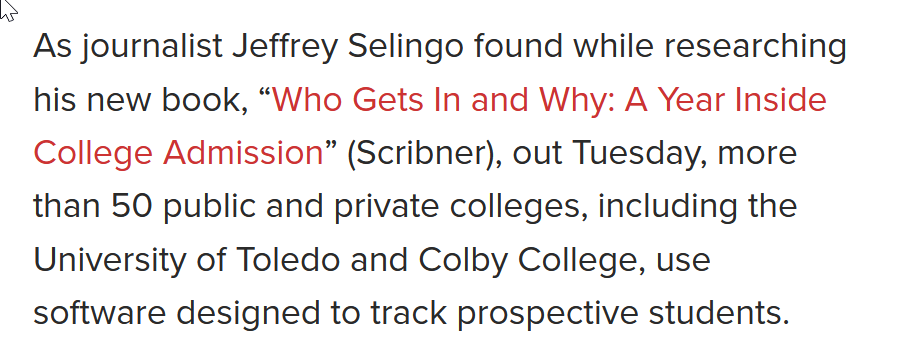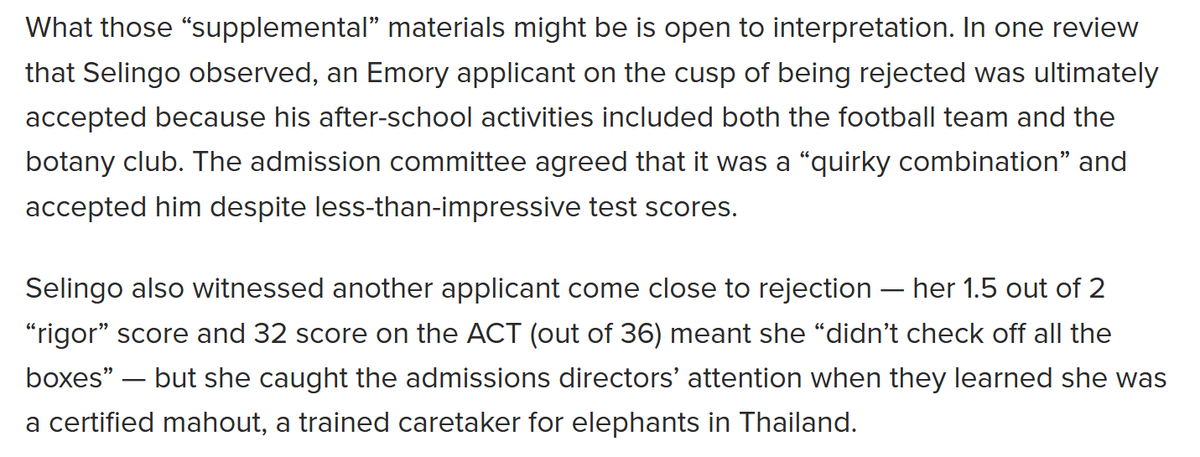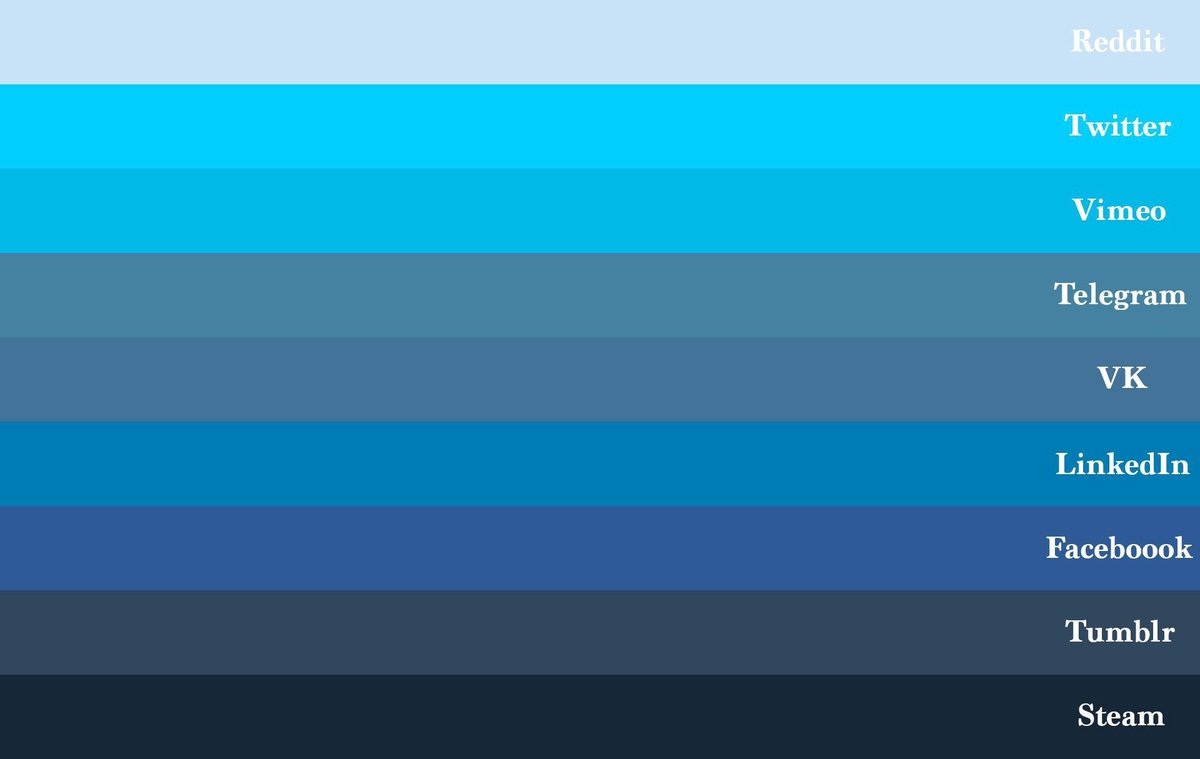Thread: The NY Post decided to write an article about the new book by @jselingo
I am no New York expert but I don& #39;t get a good impression from the Post most times I read an article there.
But I thought this might be an exception. It& #39;s not.
I am no New York expert but I don& #39;t get a good impression from the Post most times I read an article there.
But I thought this might be an exception. It& #39;s not.
First problem: They don& #39;t
More than 50 is technically accurate. But it& #39;s probably actually more like 1500. Still, of course, the reality is that it only matters at 50 at most, and--no offense intended--University of Toledo is probably not one of them.
I& #39;ve worked at six colleges, and while this technology wasn& #39;t around until recently, even if it had been, it would have maybe been used at one of them.
That& #39;s because there are only two types of colleges in the US: Those that deny students they would like to admit (maybe 40) and those that admit students they& #39;d probably like to deny (everyone else.)
Admissions is not usually a process of turning down well qualified students.
Admissions is not usually a process of turning down well qualified students.
I always get a chuckle out of the unnecessary use of quotation marks. It makes me fill like I& #39;m being lectured.
I went to Catholic school with nuns, NY Post. You don& #39;t scare me.
I went to Catholic school with nuns, NY Post. You don& #39;t scare me.
Yes, college enrollment boomed in the 60s. But it& #39;s not just the baby boom. It was two offshoots of the military industrial complex: The GI Bill and the Vietnam War. College-educated parents wanted their kids to go to college, and to avoid the draft.
Here& #39;s the data on that https://nces.ed.gov/programs/digest/d19/tables/dt19_303.10.asp?current=yes">https://nces.ed.gov/programs/...
I believe College Board Student Search Service started in the mid 1970s but am too lazy to look right now. Anyway, it wasn& #39;t just selectivity; it was survival. Peak live births in the US happened in 1957. Colleges could see the drop coming.
In order: False, false, probably true probably true, probably true, and probably true. But the rejoinders are based on fault premises.
I suspect--but might be wrong--that the "Latting Index" is used at Emory, given that the Chief Enrollment Officer there is John Latting. While it& #39;s true many colleges use an index, I don& #39;t know that they all use his.
The two paragraphs make me hate my profession. Botany and football are "quirky?" Only if the kid is trying to grow non-GMO modified vegan footballs. It& #39;s more likely he& #39;s an athlete, which is another story all together.
And low-income kids reading that second paragraph
And I believe my good looks are why I have over 5,000 followers on the Twitters, mother who is way too involved in her kid& #39;s college search (I bet he applied early and checked "no" on the financial aid question.
Which sentence is more wrong: Charles Manson was misunderstood; Barney Rubble was the greatest actor of the 60& #39;s, or the first sentence in this paragraph?
This is true, but it& #39;s probably the exact opposite of what the author thinks.
I want to be clear: I& #39;ve not yet read Jeff& #39;s book, and my criticism is of this piece of sloppy journalism, not the book it& #39;s reviewing. It& #39;s laden with the same misconceptions many in the media have of how we do our work, and it lumps college admissions into one big thing.
Several years ago, I wrote a chapter in this book, which was intended to be the text for the first class in a master& #39;s program in Higher Ed. You can read most of that chapter here. #reader_1433116014">https://www.amazon.com/Contemporary-Colleges-Universities-Adolescent-Cultures/dp/1433116014/ref=sr_1_3?dchild=1&qid=1600653314&refinements=p_27%3AJoseph+L.+Devitis&s=books&sr=1-3 #reader_1433116014">https://www.amazon.com/Contempor...
We are not monolithic. Talking about "College Admissions" is not about college admissions. It& #39;s about that office, at that one college, based on that university& #39;s mission and goals.
That& #39;s it.
That& #39;s it.
These colors are all blue. But they& #39;re not the same color.

 Read on Twitter
Read on Twitter

















